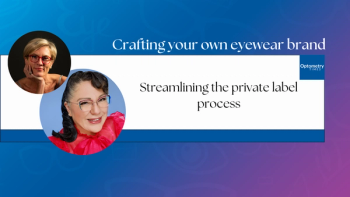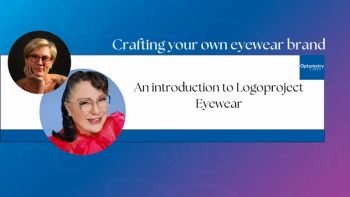
Ten reasons why my practice doesn’t have a phone
Many of you know I pulled the plug on a practice website and went full on social media nearly eight years ago. However, most of you probably don’t know that around the same time, I also cut the cord on the phone!
Many of you know I pulled the plug on a practice website and went full on social media nearly eight years ago. However, most of you probably don’t know that around the same time, I also cut the cord on the phone! The phone represented a huge headache for our office. The phone is the most disruptive form of communications. Eliminating it has led to a happier staff and better patient experience.
Disrupting the in-person experience
The phone was disruptive to an awesome in-person experience. Your patients hate it when the optician stops working with them to pick up a phone call. How do you feel when you walk in somewhere, and you are given the "finger" by the front desk person, indicating for you to just hang out while she finishes up the call? Our patients and staff hate the disruptions caused by the phone.
Why they call
For a period of about three months, I began to study phone use. Why were people calling us? The vast majority of the calls we received were to:
1. To make an appointment
2. To find out if an order was in
3. To find out basic info, such as hours and insurance accepted
Recent news:
Our solutions were:
1. Utilize an online scheduler. We wanted our patients to be able to enjoy the same efficiencies and advantages they are accustomed to while using services like Grubhub.com, Expedia.com, and Amazon.com. They are able to make an appointment at any time, even when the office is closed. They also will automatically get the office FAQ, so they come best prepared.
2. Utilize an old-school business card with eyewear expected date of arrival written on it. Despite our love for everything tech, we still do some things analog. One of them is the use of business cards. The optician will hand a patient a business card with the estimated time of arrival and say, “We expect your glasses by this date. As soon as they arrive, we will e-mail you. Please don’t e-mail us before this date, however, if for some reason they are not here by this date, then e-mail us to let us know.” We intentionally mention e-mail several times to let people know that is how we prefer to communicate.
3. Ensure our online presence includes our basic information. For example, our Facebook page’s info section is complete, and our “About” section has an up-to-date FAQ. The FAQ addresses many of the common questions people ask. We are clear that e-mail is our preferred mode of communication.
Why we call
Why were we calling people?
1. Notifications and reminders
2. To place an order
3. To verify insurance
More from Dr. Bazan:
Our solutions were:
1. Not only did the online scheduler prove to be very convenient for our patients, it's also helped them remember to show up for their appointments. They receive a calendar invite, along with several e-mail and text reminders. Keeping our no-show rate as low as possible has helped ensure we are staying continuously profitable.
2. Ordering via the phone was problematic. Whether we said it wrong or it was heard wrong or both, it lead to errors. Ultimately patients were upset. Once we switched over to ordering online, those errors were greatly reduced.
3. Verify insurance online. Most companies have an online portal, which allows one to verify coverage and benefits. Not only was this a time saver, it helped us to be able to show the patients exactly what their coverage was.
We understand there might be a situation in which one still has to call us, so we continue to maintain a phone number. However, incoming calls go straight to our free service Google Voice greeting. Our greeting addresses the main reasons people call and what to expect if they leave a message. We do honor a request for a call back and, on occasion, do need to place a call.
For those instances, we have use Google Voice with an USB headset that serves as a phone of sorts. Those voicemail messages are automatically transcribed and instantly e-mailed to us so we can triage and promptly handle anything urgent. For a good time call 347-560-8393.
10 reasons why cutting the cord was awesome
1. We save big on payroll.
You may think that we should just hire a full-time phone person. It would be nice to have the $40,000 in payroll and taxes in surplus to make that a reality, but the reality is that it’s not the best use of resources. In fact, it has proven to be an unnecessary use of resources. We can use that money to reinvest into the practice-or take a great vacation!
2. You have time to craft better response.
How many times do you feel that if you only had time to think about what you needed to say, the situation would have worked out better? When somebody calls and puts you on the spot, often you handle things in a less than ideal manner.
More from Dr. Bazan:
3. Record of the conversation-no more forgetting the answer.
We want to provide the best possible information. The phone is the worst way to give somebody information. Often, misunderstandings occur if what is said is not heard or understood correctly. Often peoples’ memories adjust the exact details of the conversation, leading to further misunderstandings.
What have we found as an alternative? E-mail. We are e-mail obsessed. There are tons of people out there who feel the same way and also choose e-mail as their preferred method of communication.
The e-mail message provides a reference and record of all communications. That often proves to be super helpful when you are trying to think of what exactly was said about things such as your order, appointment, insurance, etc.
4. E-mail is respectful of patients’ time.
We want to be respectful of our patients’ time because we know they want that. We understand that they have busy lives and don't often just pick up the phone as soon as it rings. We see those old voicemails from last Tuesday on your phone that you still haven't even checked, let alone called back! E-mail allows people to respond back to us on their time schedule. That also means that they can contact us 24/7/365 and not have to worry about whether we are open or closed.
5. No more putting people on hold.
Busy offices will ultimately place calls on hold. Without the phone, there is no more being placed on hold. We know how frustrating it is to sit on hold-talk about a waste of time!
Recent news:
6. Improved follow-up.
We are able to follow up with much better accuracy because we have the ability to review the e-mails that were exchanged and the orders that were placed. For example, we can see exactly what and when was ordered, which helps our customer service.
7. Improved patient experience.
The staff is able to focus their attention directly on the person they are working with in the office without interruption. Patients get our undivided attention.
8. Enhanced information.
Through e-mail, we are able to send enhanced information such as pictures and a welcome form. There simply is no way to do this over a traditional phone line.
9. Promote our social media sites.
Our e-mail signatures contain links to our latest Facebook post and other social media sites. This helps build up our online presence.
And last but not least…
Related:
10. No phone bill!
We have enjoyed these benefits of no phone for over seven years now. Are you ready to cut the cord? Leave a comment on
Newsletter
Want more insights like this? Subscribe to Optometry Times and get clinical pearls and practice tips delivered straight to your inbox.














































.png)


